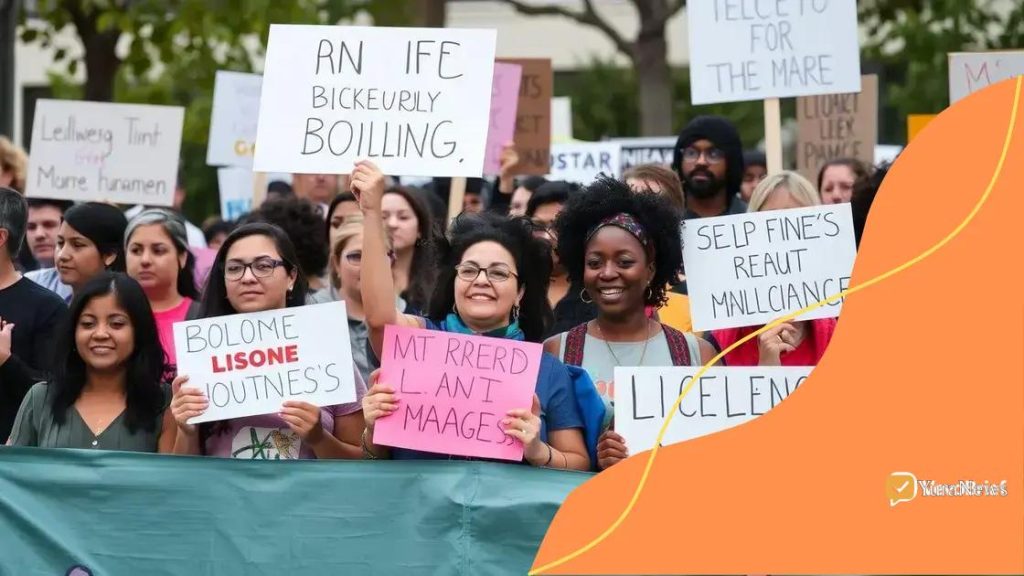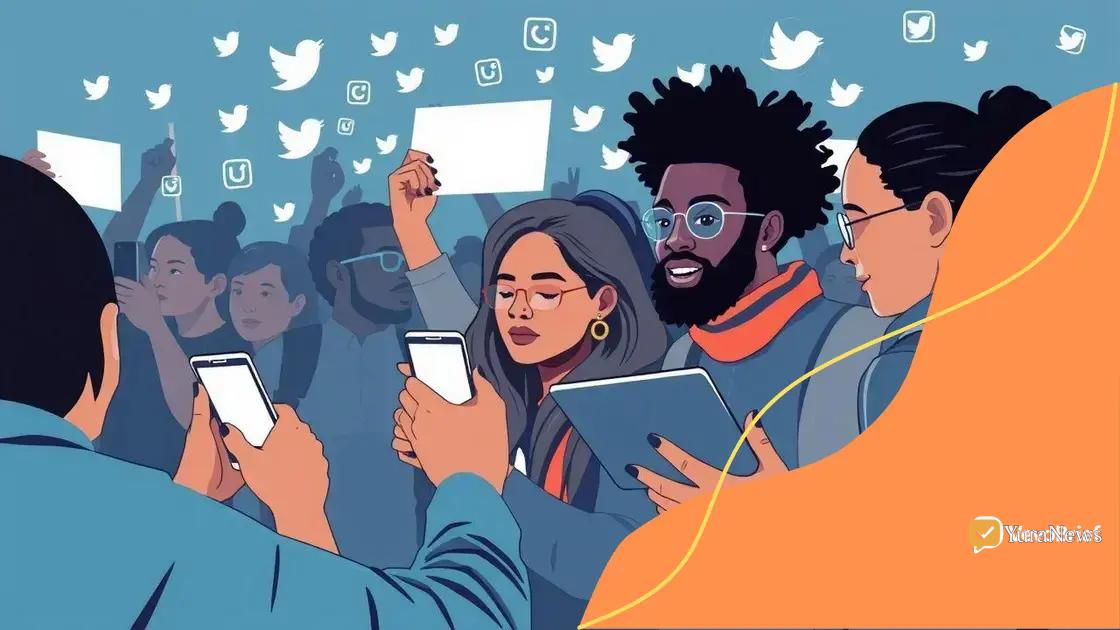Protests over inequality continue: What you need to know

Anúncios
Protests over inequality continue to drive social change by highlighting economic disparities, influencing government policies, and fostering a culture of activism while facing both support and backlash from authorities.
Protests over inequality continue to shape the social landscape globally. Have you noticed how these movements ignite conversations and inspire change? In this article, we delve into their significance and broader implications.
Anúncios
Understanding the root causes of inequality
Understanding the root causes of inequality is essential for addressing the issue effectively. Inequality manifests in various forms, including economic, social, and political dimensions. By examining these factors, we can grasp the complexity behind the protests.
Economic Disparities
One significant aspect of inequality stems from economic disparities. Wealth distribution is profoundly unequal, creating a gap between the rich and the poor. Many individuals struggle to access basic resources like education and healthcare due to their financial situation. This imbalance often leads to frustration and unrest.
- Issues of wealth concentration
- Lack of access to quality education
- Healthcare disparities among different communities
Societal Factors
In addition to economic factors, societal issues play a crucial role in exacerbating inequality. Discrimination based on race, gender, or ethnicity can limit opportunities for certain groups. These societal biases further widen the gap, leading to feelings of exclusion and resentment. Understanding these factors is vital to fostering unity.
Anúncios
It’s important to recognize how systemic barriers hinder progress for marginalized communities. For instance, many people face significant challenges in finding employment or housing due to societal perceptions.Empowerment through education and advocacy can help combat these issues.
Political Influences
Lastly, political influences are a critical component of inequality. Legislation and policies can either support or hinder efforts to reduce disparities. When political power is concentrated in the hands of a few, it often leads to inequitable policies that favor the elite. Engaging in the political process is essential for driving change and ensuring representation for all.
As we delve deeper into the causes of inequality, it becomes increasingly clear that a multifaceted approach is necessary. From addressing economic disparities to dismantling systemic biases, concerted efforts are needed to bridge the gap.
Historical context of protests
The historical context of protests gives us valuable insights into their significance today. For centuries, people have gathered to voice their concerns about injustices. Understanding why these protests occur helps us grasp their relevance in the fight against inequality.
Early Movements
Protests have been a tool for change since ancient times. Early movements often centered around issues such as labor rights and civil liberties. These gatherings brought attention to societal issues that were often ignored. Some of these early protests laid the groundwork for future actions, inspiring generations to come.
- Labor rights protests in the Industrial Revolution
- The civil rights movement in the 1960s
- Anti-war demonstrations throughout the decades
Influential Figures
Certain figures have played critical roles in shaping the course of these movements. Leaders like Martin Luther King Jr. and Mahatma Gandhi used peaceful protests to advocate for justice. Their methods not only captured public attention but also showcased the power of nonviolent resistance. As we reflect on their legacies, we recognize how their strategies remain relevant today.
Different movements have drawn inspiration from these historical examples. Today, activists often use similar tactics to mobilize support and raise awareness about ongoing issues. By understanding the lessons from the past, current protesters can adopt effective strategies.
Modern Protests
In contemporary society, protests continue to evolve. Issues of inequality, climate change, and racial justice dominate the discussions. These movements draw inspiration not only from historical events but also from the technology available today. Social media has transformed how people connect and organize, enabling larger participation across various demographics.
As we explore the historical context, it is clear that protests are a vital part of our social fabric. They serve to challenge the status quo and demand change. The legacies of past movements inspire current activists to continue pushing for a more equitable society.
The role of social media in mobilization

The role of social media in mobilization has become increasingly significant in recent years. Social media platforms provide a space for sharing ideas, raising awareness, and organizing events. Through these platforms, activists can reach a wider audience quickly and efficiently.
Instant Communication
One of the key advantages of social media is instant communication. Activists can update their followers in real-time during events or share critical information. This rapid dissemination of information helps mobilize supporters, making it easier for people to join protests or campaigns.
- Live streaming events to engage more viewers
- Using hashtags to unify messages and efforts
- Creating event pages for better organization
Building Communities
Social media also plays a vital role in building communities around causes. Online platforms allow individuals to connect with like-minded people, forming networks that support their goals. These connections can lead to grassroots movements that gain momentum over time. Activism becomes more accessible, as individuals feel a sense of belonging to a larger cause.
By fostering these communities, social media encourages people to share their stories, making the issues more relatable. This personal touch often resonates with others who may not have been aware of the struggles faced by different communities.
Challenges and Risks
While social media is a powerful tool, it also presents challenges. Misinformation can spread quickly, and individuals may encounter online harassment. However, many activists are finding ways to combat these issues by promoting digital literacy and encouraging respectful dialogue.
Despite these risks, the benefits of social media in mobilization are undeniable. This modern tool has transformed how protests are organized and executed, highlighting the critical role it plays in today’s activism landscape.
Responses from governments and organizations
The responses from governments and organizations to protests play a crucial role in shaping the outcomes of these movements. These reactions can range from supportive measures to outright resistance, depending on the context and the issues at hand.
Governmental Actions
Governments often respond to protests in various ways, including policy changes, public statements, or increased law enforcement presence. In some cases, they may acknowledge the issues raised by protesters and initiate reforms. For example, when protests highlight economic inequality, governments might introduce new social programs.
- Implementing new policies to address concerns
- Dialogue with protest leaders to understand demands
- Increasing security in response to potential violence
Repression vs. Support
While some governments choose to engage positively, others resort to repression. This might include increased policing, curbing freedoms of speech and assembly, or even criminalizing protest activities. Repressive measures can lead to escalating tensions and more severe backlash from the public.
On the flip side, organizations, especially non-profits and NGOs, often play a supportive role during protests. They may provide resources, training, or legal assistance to activists, amplifying their voices and ensuring their safety. These organizations help create a framework for activism, enhancing coordination among various groups.
International Reactions
The responses are not just localized; international communities often weigh in, especially when protests gain global attention. International organizations and foreign governments may condemn crackdowns on peaceful protesters or offer support to their movements. This global solidarity can put additional pressure on national governments to alter their approaches.
Responses from governments and organizations significantly influence the effectiveness and direction of protests. Understanding these dynamics is crucial for activists as they navigate the complexities of advocacy and change.
Looking ahead: Future implications of ongoing protests
Looking ahead, the future implications of ongoing protests are profound and complex. As movements grow, they have the potential to reshape societal norms and influence future policies. Understanding these implications helps clarify the possible paths forward for activists and society alike.
Shaping Policy Changes
One significant outcome of sustained protests is the possibility of transformative policy changes. Governments may respond to public pressure by enacting reforms that address the root causes of inequality. Such changes often center around areas like social justice, economic equality, and environmental policies.
- Increased focus on affordable housing
- Striking down discriminatory laws
- Investment in public services and infrastructure
Long-term Social Awareness
Protests also play a crucial role in raising long-term social awareness. Continuous advocacy can lead to a shift in public perception and understanding of critical issues. As more people engage with movement narratives, it can foster a culture of activism that transcends individual events.
This journey often brings diverse voices to the forefront, emphasizing inclusivity. Having these discussions enables a broader understanding of systemic injustices. It encourages solidarity among various groups fighting for equal rights, amplifying their collective impact.
Potential for Backlash
However, with this progress may also come backlash. Resistance from those in power can increase, leading to stricter measures against protests. Moreover, divisions within society may deepen, causing polarization. It is crucial for activists to remain aware of these dynamics and seek constructive dialogue.
Strategies for collaboration and peaceful engagement with opposing views can help mitigate conflicts. Building alliances with various stakeholders ensures that the conversations stemming from protests continue to evolve positively.
FAQ – Frequently Asked Questions about Protests Over Inequality
What are the main causes of protests over inequality?
Protests often arise from economic disparities, social injustices, and political issues that marginalized groups face in society.
How does social media influence protests?
Social media enables rapid communication, mobilizes supporters, and raises awareness about issues, making it a powerful tool for activists.
What kinds of responses can protests expect from governments?
Governments may respond with policy changes, public statements, or increased enforcement, depending on the nature of the protests.
What are the potential outcomes of ongoing protests?
Ongoing protests can lead to policy reforms, increased social awareness, and the fostering of an activist culture, but they may also encounter backlash.